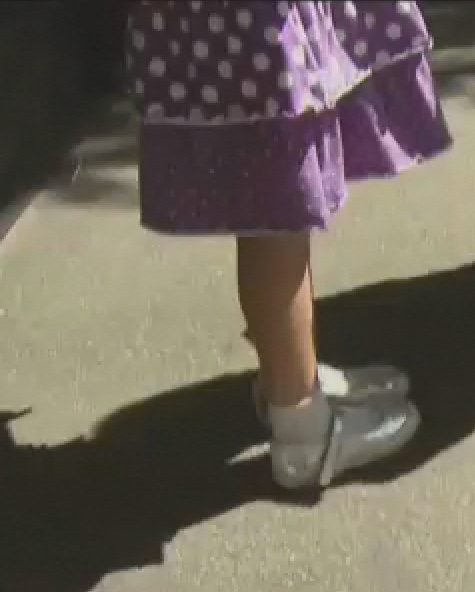Two weeks ago you read my first installment of my noir tale of how I’m plotting to murder my lawn -- that yellowing bitch with the bald spots that I call Augustina. I still wake up in the middle of the night and toss and turn thinking about how much she’s costing me.
I am in the pre-meditation stage, which is more like ceaseless agitation. As I proceed I still want to slay her, but flaws in my various plans are popping up -- plans that will either cost me money, or risk me terrible neighborhood embarrassment.
However, I no longer feel ashamed for wanting to kill my lawn. In the last two weeks, the story of the looming California “mega-drought” has become almost a daily story. The town of Willits, California, in Mendocino County, has less than a 100-day supply of water available, and this is the “rainy season.” Lake Cachuma, an artificial lake in Central Santa Barbara, is drying up. Los Angeles County currently has no problem, but that’s because we’ve been stealing water from Mono County near the Sierra Nevada range for decades.
We’ll be fine for a few months here in L.A., so we can keep watering our lawns. The Central Valley farmers may not have enough water to grow crops to feed us or their livestock, which means our economy will crash and there will be food shortages, but at least we’ll have nice green lawns when the riots start.
The powers-that-be are preparing us, however, with these stories. By summer, I predict that we will have a repeat of the California Drought of the mid-1970’s, when there was severe mandated rationing. I remember that drought, and how we had to carefully plan our water usage for the week. It wasn’t that bad. We washed clothes less often, we only ran a full load of dishes, and we had timed showers. In Southern California they emptied their swimming pools, which skateboarders loved. In the movie Dogtown and Z-Boys, pro-skater turned filmmaker Stacy Peralta identified the two sparks that started the worldwide skateboarding craze in the mid 1970s -- good polyurethane wheels, and empty swimming pools in Southern California. I remember loving the cool photos in Skateboarder magazine of thrashers getting their board over the underwater light in the deep end of the empty pool. My parents’ high water bill did not register.
What was hard was the building resentment within neighborhoods. Mandatory rationing came with heavy fines -- but there were people who had enough money to water their lawns and gardens and endure the fine, which angered their neighbors. We were being asked to work together, across class, and mandatory means everybody, or so we thought. Different counties set up “snitch lines” where you could make an anonymous call and turn in a scoff-law you saw watering his driveway. People would surreptitiously water their lawns at 3 a.m. to avoid detection, and neighbors would hear the hiss of the sprinkler system next door and place snitch calls to the County Water “Stasi” at 3:15.
There was also a drought in the Western United States in the mid-80s, and I remember going to a decaying outdoor public pool in Los Angeles, a cement tank which had a large leak in the bottom, and to keep the pool filled they ran cold water from a 5’’ diameter pipe 12 hours a day. There was also news reports of old prisons and jails which had toilets so broken they never stopped flushing. Anyone who’d been fined for a high home water bill was outraged by the double standard, and tempers were short.
All this is coming, and we should be ready for it.
Which brings me back to Augustina.
My murder-for-profit (or at least savings) has hit some stumbling blocks. Take notes, fellow homeowners:
First, I am currently wasting water trying to revive a near-dead lawn that went without sprinklers for 4 to 6 weeks in autumn. I need to keep it alive so that it looks good enough in photos to qualify for a rebate, and then I can kill it.
I fill out the form, take four pictures, include my water bill, and describe how much square footage of turf I am willing to remove. I need 1) a high enough water bill, 2) a lawn with enough square footage to impress them 3) photos of a lush green lawn that is wasting water. If I get all three, I may get as much as $2400 back!
However, my lawn is brown and yellow, so I may spend $300 in water to then find out that I don’t quite qualify for the rebate. They won’t pay you for a lawn that’s already dead.
Lucky for me (I think), a solution appeared. A film location scout liked our fence and our front yard, and they offered us $1600 to shoot an Alka Seltzer commercial that features a postman with indigestion who gets bitten by a dog -- all featuring Augustina.
“We love your fence, we love your yard,” the art director said, “but your lawn doesn’t look so good.”
Yeah, we noticed.
“Do you mind of we paint it?”
We agreed, of course, and the art director sent crew guys to sprayed our 1500 square foot front lawn and walkway with green food coloring.
I now take four more NEW photos, and my lawn looks lush and thirsty again -- and maybe alive enough to qualify for a rebate!
Do I proceed? The truth is, however, that I am now engaging in deception. Potential fraud. I’m an Eagle Scout with Canadian roots, which means I’m as transparent as a pane of glass. I get caught cutting the dessert line. I get reprimanded for having 13 items in the 12-item line at Trader Joe’s. I will send in the rebate application with my new fake photos, and knowing my luck, I’ll get the one inspector come and takes blade samples, and I’ll be arrested for trying to defraud the City of Los Angeles.
However, I do get a rush having a green lawn again, even if it’s green from paint. My neighbors all nod at me, and I feel their admiration and envy. I’m living a lie, but it sure feels good. This is one of the key character flaws in any good noir story, so I must proceed forward with hubris toward my own demise. I believe I can get away with it.
And there is yet one more vainglorious plot that may backfire in my face. If it’s going to be a dry summer with mandatory rationing, why not replace Augustina with some artificial turf? That seems like it might be a good option. Then I can feel this green rush all summer long. Sure, it’ll be fake, but I’ll have the only green lawn on the street!
The DWP doesn’t agree, it turns out. After examining their website, I couldn’t find a definitive answer as to whether they would give me the $2400 rebate if I put in the fake lawn. I called several days in a row, and got the “due to high call volume, your wait to talk to a customer service representative will be 45 minutes,” recording. I finally got a very nice woman who kept me on hold for ten minutes, and returned to finally say that NO -- the DWP will NOT give a rebate to a homeowner who removes turf who then puts in an artificial lawn.
It’s not green enough. I would be putting down 1200 to 1500 square feet of petroleum-based rubber and plastic, which is a giant carbon footprint. It’s like setting fire to a stack of tires on your front lawn. Then, once it’s installed, in impermeable. Water doesn’t flow in to the beautiful sandy alkaline soil, increasing the water table of our dry San Fernando Valley, which defeats the purpose. We’re trying to keep the water that manages to fall from the sky, not divert it away. My fake lawn would send all the rainwater down the street and into the storm drains, just like every other paved surface in the city already does. I may as well lay down asphalt.
My daughter wants a lawn though. Therefore, I am going to proceed with this plan as far as I can take it. I know I should be green, but I’d also like save some green, especially if I never need to water again. It may be more hubris on my part, but I want to know what kind of deal I can get.
I found out a fake lawn could run me as high as $8000. The guys who spray-painted my lawn, however, are trying to hook me up. They know a guy, who knows a guy, who knows a guy...know what I mean? You have to spend top dollar for a fake lawn that looks real, but not if I go through Hank’s buddy, who runs a fake lawn place way out in Panorama City. Hank warned me about how hot the fake lawns get in the summer -- hot enough to burn your feet. Unless, of course, you get the special T60 grass. Hank insists that I buy the T60 from his buddy, but then hire his other buddy to install it.
I spent two hours on Saturday reading websites for fake lawn companies and I was ready to call for an estimate on Monday morning. This is the response I got:
“The T60? You do NOT want the T60, not anymore. Trust me. But what I can do, for you, s to send one of our sales reps out next week with some samples, and he’ll give you a free estimate. We have a special, this week only. How does that sound?”
I feel there may be trouble.
After all, we’re in the second act of this Valley thriller.
I’ll keep you posted.













